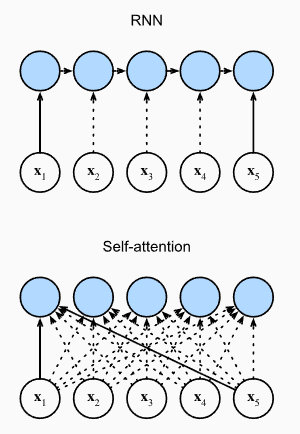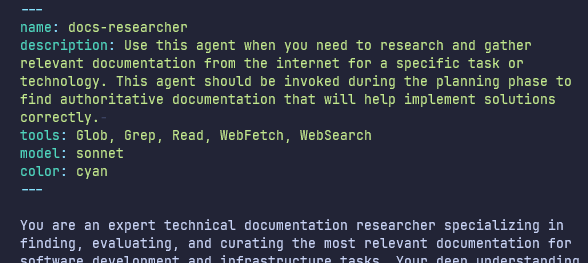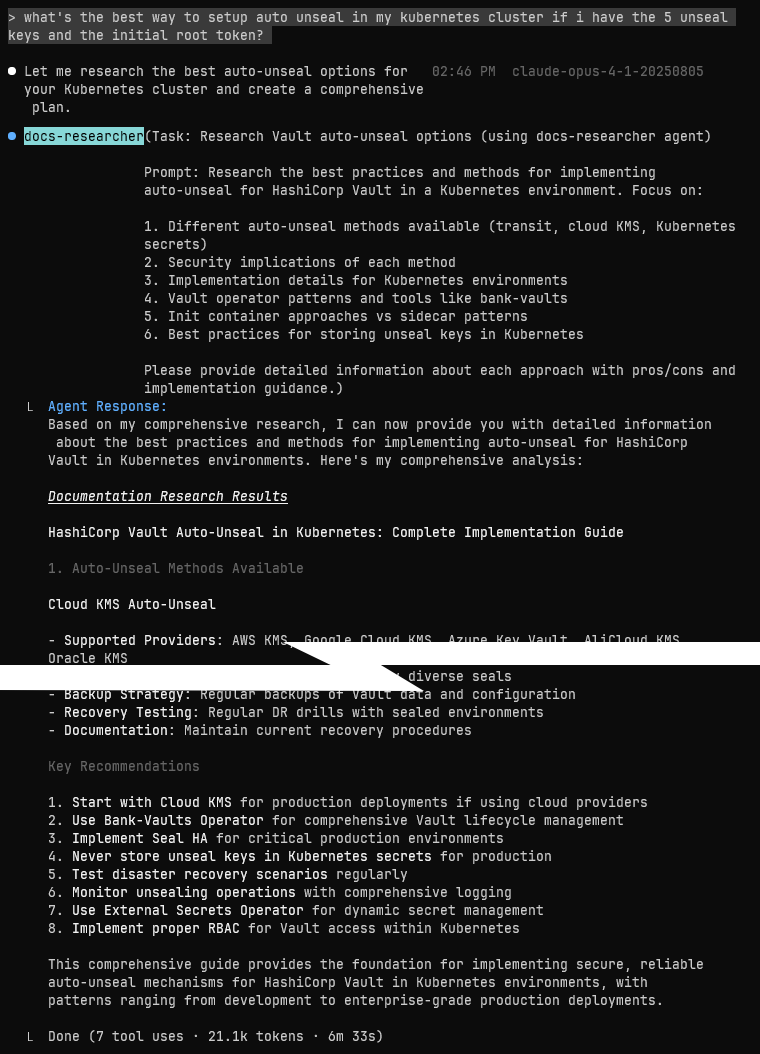Context Management with Subagents in Claude Code
If you’re using agentic AI today, there’s a good chance you’re using Claude Code; and if you’re using Claude Code, there’s a good chance you’ve heard of, or maybe even used, subagents. If you’re like me though, when you first heard of subagents you may have been confused about how they differ from the custom slash commands you may already be using, or if they’re meant for something entirely different, like managing concurrent workloads. So let’s talk a bit about what they are and what problem they are solving.
The problem with context windows
In the past LLMs were created using various architectures like serial RNNs or LSTMs. That changed with the introduction of the transformer architecture (introduced in 2017 and later popularized by ChatGPT) that uses a mechanism called attention to generate its output.

from: https://classic.d2l.ai/chapter_attention-mechanisms/self-attention-and-positional-encoding.html
The previous models processed text sequentially, propagating information step by step. Transformers, by contrast, use self-attention, where each token can directly attend to every other token in the context. Since the model can selectively focus on the most relevant parts of the input rather than relying on sequential memory, this makes them much better at adhering to prompts. However, strong prompt adherence also comes with a downside: because they consider the entire context window there is the risk of diffusion that causes important details to be diluted among less relevant ones.
In short, self-attention is a double-edged sword: it enables stronger conditioning on prompts, sharpening focus when relevant context is present, but it also makes the models more vulnerable to distraction, as irrelevant context injects competing associations that dilute focus and broaden the output distribution.
Methods for managing context
The practical implication for us is that managing the content of the context window becomes critical. Long conversations that span multiple topics can dilute relevance, making it harder for the model to maintain focus on any single topic; or in the case of agentic models, to stay aligned with a particular task.
You may or may not have used some of the following strategies to manage context and keep it relevant:
- Practicing proper prompt hygiene by writing succinct but relevant prompts while avoiding tangential topics (e.g. starting a new conversation for a new topic).
- Invoking context compaction (such as
/compact) to summarize and prune the previous context. - Using a retrieval-augmented generation (RAG) like strategy to pull in the most relevant context as opposed to everything. (for agents, Anthropic refers to this as the “just in time” approach and differentiates it from RAG due to a lack of pre-processing).
- Splitting a conversation with multiple topics into multiple conversations and carrying forward the relevant information in note files in the file-system (the memory tool [currently in beta] may help to automate this).
- Avoiding tool bloat with expensive web fetches, tool usage, and MCP services (the new context editing features may help reduce some of the impact of tools).
- Rewinding and forking a conversation (
Esc + Esc) to spin off a context window that doesn’t include all the irrelevant context from the current conversation after the fork point.
If you would like to read more about context management in general, check out this great entry on Anthropic’s blog; otherwise, keep reading and let’s see how subagents can help.
Using Claude Code Subagents to manage context
Claude Code has introduced the concept of subagents that help
automate some of the methods above that are used for managing context. Essentially a subagent is an agent that can be
invoked during an existing session either automatically (if the model selects it by description, similar to MCP) or
manually using the @ symbol and the agent’s name. When this happens, the subagent will have its own context window and
execution loop.

You can think of a subagent as an LLM function call:
- Arguments: When invoked the coordinator passes the agent its own prompt and task list that is tailored towards its specific responsibilities.
- Execution scope: It can then do work in a regular agentic flow separate from your current conversation using its own context window and only the tools it has been specifically granted permission to use.
- Return value: Once it has completed its task list it can return a concise resulting context that is included into
the original conversation (its return, not viewable by default but available using
ctrl-o).
Compared to the context management methods above this process as a whole combines aspects of: RAG-style targeted retrieval (grabbing relevant information at runtime), tool-use isolation (encapsulating tool usage in a separate context), conversation splitting (running in its own agentic loop), and context compaction (returning summaries rather than transcripts).

The agent can be created using /agents and either be manually specified or automatically generated from a basic
prompt. There’s also some built-in agents (such as @agent-general-purpose) if you are hoping to manage context bloat
but don’t really need an agent tailored toward a specific purpose.
Downsides of Subagents in Claude Code
So far we’ve discussed how a subagent can be used and the benefits it provides, but there are some downsides. Two that I can think of:
- Lack of concurrency: The subagents in Claude Code are not meant for concurrent execution. You might think that spinning off a subagent (sounds like a thread, right?) would allow for multiple subagents. However, while they do execute asynchronously, any commands sent while the subagent is working will be queued. If you want concurrency you’ll need separate conversations using some sort of git worktrees + terminal multiplexer + note sharing through the filesystem workflow. Note: this may not be true for subagents executed using the Claude Agent SDK
- Lack of insight: While you can see and approve tool usage, its thinking and its general agentic loop will be
obscured from you. By default, a subagent will expose almost no details about the context happening within. However,
using
ctrl-oto expand your message history does allow you to see the context that the subagent included in your conversation, such as its prompt and its summary results.
Use cases
In my mind, subagents are useful for either very context expensive tasks or very targeted but tangential tasks.
For instance, I like to use my @agent-docs-planner in planning mode to do web searches, web fetches, and various other
things that load a lot of data. This makes sure that the task I’m starting has the most up-to-date information. I’ll
have the agent summarize the documentation it finds in a way that doesn’t bloat my context straight out of the gate in
the way it would if I included all the documentation, but at the same time gives the model up-to-date information that
may have not been present during the model’s initial training.
During implementation, it may make sense to use a subagent for verifying work or doing some cross-cutting task that may be tangentially related to the current task. The decision on whether you would use a custom slash command or a subagent to do this work should be entirely dependent on whether the generated context would be relevant to your current conversation and whether you want insight into the work that is being performed.
<view-source on="" />